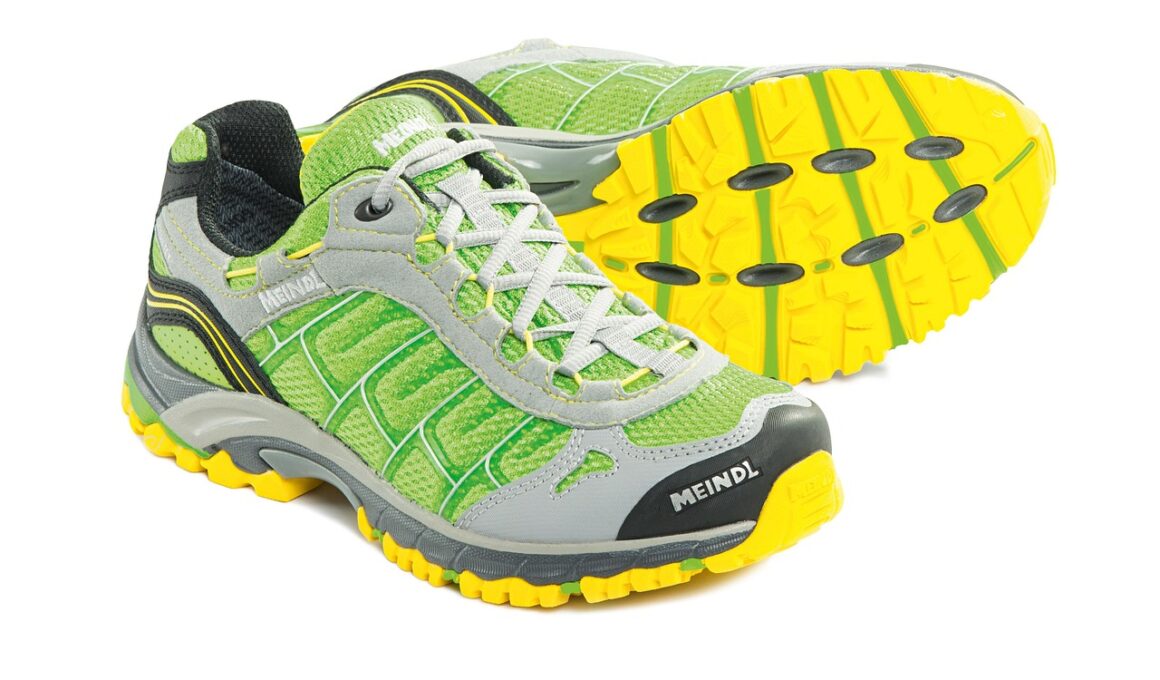How Weather Conditions Affect Trail Running Technique
Trail running is an exhilarating form of exercise that allows enthusiasts to explore nature while maintaining physical fitness. However, various weather conditions can significantly affect how runners perform on trails. Factors such as temperature, humidity, rainfall, and wind can alter grip, speed, and endurance. In warm weather, runners may find themselves dealing with heat fatigue, leading them to hydrate more frequently. Conversely, cold conditions might cause muscles to tighten, which can increase injury risk without proper warm-ups. Rain can create slippery trails, requiring improved foot placement and heightened focus to avoid falls. Wind can impact running speed and breathing, creating additional resistance that can challenge even seasoned athletes. Understanding these weather influences on trail running can aid in enhanced performance and injury prevention for trail runners. Preparing effectively for conditions not only boosts confidence but also promotes a safe and enjoyable running experience. Runners should consider utilizing weather apps to help them plan their runs appropriately, ensuring that they are well-informed about the forecast in order to adapt their techniques according to environmental circumstances. Training under various weather scenarios can also strengthen a runner’s adaptability and technique performance on challenging trails.
Heat and Humidity Challenges
Heat and humidity can pose serious challenges for trail runners. High temperatures may cause the body to overheat quickly, leading to dangerous situations like heat exhaustion or heat stroke. It’s essential for runners to dress appropriately, choosing lightweight and breathable fabrics that wick away moisture. Additionally, hydration becomes crucial under these conditions; runners should start hydrating before heading out and continue to drink during their trail run. While some may prefer electrolyte drinks, plain water is also effective in maintaining hydration. Adapting trail running techniques like pacing is vital in hot weather, as slowing down may prove beneficial. Recognizing when to take breaks is equally important, providing both physical and mental rejuvenation to push through challenging segments of the trail. On humid days, perspiration may hinder performance by making surfaces slick and muddy, requiring a sharper focus on foot placement. To adapt to such conditions, runners often train in environments that mimic these challenges, preparing their minds and bodies for the realities of heat and humidity during events. Ultimately, understanding specific techniques to tackle these factors can lead to safer and more enjoyable runs in hot weather.
In addition to heat and humidity, rain significantly alters trail dynamics and running techniques. Wet surfaces increase the risk of slipping and falling, necessitating a cautious approach that emphasizes traction. Opting for shoes with superior grip is essential in such conditions. Runners may also need to adjust their footfall, adopting shorter strides that allow for better control on slick terrain. Awareness of terrain becomes a key factor; looking for obstacles, water pools, or muddy patches is imperative for safety. As puddles can hide rocks or roots, they can be hazardous, making it important for runners to remain vigilant on their paths. Moreover, maintaining a steady mindset can prevent panic in unfavorable conditions. Practice in similar weather enhances a trail runner’s capability to remain calm, contributing to confidence during races or longer runs. Furthermore, appropriate gear such as waterproof jackets can help manage body temperature and discomfort levels, allowing runners more freedom. When rain is in the forecast, planning route alternatives can make a huge difference, ensuring a safer and enjoyable trail running experience. Runners must remain informed about trail conditions and weather predictions to make suitable adjustments for their runs.
Cold Weather Considerations
Coping with cold weather presents another unique set of challenges for trail runners. In low temperatures, runners face the risk of frostbite and other cold-related injuries. Layering clothing is crucial for insulation, comprising moisture-wicking base layers, insulating materials, and wind-resistant outer layers. Keeping blood flowing to extremities can help prevent numbing sensations; therefore, runners should wear appropriate gloves and hats to seal heat effectively. A dynamic warm-up is essential to prepare the body for performance when temperatures drop, including stretches that activate muscles and joints to maximize flexibility and reduce injury risk. When preparing for cold-weather runs, it is also important to consider proper nutrition as fueled bodies generate heat. Comfort becomes a priority as staying safe is fundamental; knowing when to cut a run short due to severe conditions should always be in runners’ minds. Trail runners can also benefit from studying their body’s responses to cold and adjusting their technique accordingly, focusing on maintaining a rhythm that optimizes endurance while minimizing impact on joints. Regular practice in cold environments enhances acclimatization, bettering performance without excessive discomfort on cold days.
Factors such as wind also have a substantial effect on trail running techniques. Wind resistance can make running feel significantly harder, affecting pace and fatigue levels. Runners may encounter headwinds which slow down their progress and require stronger, more consistent efforts to maintain momentum. Creating a strategy such as finding sheltered areas can provide relief and conserve energy, allowing runners to press on with more endurance. Utilizing the right body posture can help reduce wind resistance, promoting a more aerodynamic position while running. Foot placement and cadence may have to adapt as well; staying light-footed can help minimize energy loss against the wind. Dwindling gusts may also affect breathing patterns, challenging runners to adjust their inhalation and exhalation techniques. Practicing in windy conditions regularly helps prepare runners to develop confidence dealing with unpredictable elements during competitions. Learning to adjust not only individual pacing but embracing flexibility in approach contributes to overall performance. Understanding wind patterns, especially in specific areas, allows runners to make tactical choices throughout their runs. Observing how weather conditions change the trail environment can significantly elevate a runner’s skills and adaptability on the tracks.
Conclusion: Embracing Adaptability
In conclusion, adapting trail running techniques to various weather conditions is crucial for both performance and safety. Trail runners must understand how heat, humidity, rain, cold, and wind impact their running dynamics, making adjustments that fit those conditions. Training in diverse weather prepares runners to tackle any challenge and build resilience. Employing strategic gear choices plays a vital role; from shoes to clothing, having the right equipment can greatly enhance both comfort and performance levels. Additionally, staying informed about weather forecasts allows runners to craft their training schedules while enhancing flexibility regarding route selections during tough conditions. The mental aspect of trail running should not be overlooked; a resilient mindset can significantly influence motivation even when facing adverse weather elements. With proper preparation and informed choices, runners can optimize their experience regardless of the conditions mother nature presents. The beauty of trail running lies in its challenge; thus, embracing these weather-related obstacles only adds to the adventure. Ultimately, the growth achieved through overcoming these impediments empowers a runner to face future environmental challenges with confidence, fostering a deeper appreciation for the sport and nature’s unpredictability.
Maximizing performance in varying weather, rigorously training under diverse conditions enhances not only physical agility but mental readiness. Runners should focus on practicing techniques that challenge their usual abilities. Whether running against strong winds or navigating muddy terrains, experimenting with new techniques can unveil strengths previously unknown. This exploration into adapting methodologies informs future races, leading to unexpected breakthroughs. For instance, a runner might discover that adopting a new breathing strategy under high humidity allows for extended endurance. Similarly, adjusting cadence in windy conditions may reveal opportunities for better pacing. Fostering a mindset open to experimentation cultivates resilience, ensuring trail runners can handle whatever weather conditions they encounter. Trail running isn’t merely about physical exertion; it intertwines with embracing challenges and adaptability. Engaging with the environment in various situations promotes growth that translates beyond just the trail. As runners immerse themselves in diverse elements, they learn to trust their instincts while refining their technical prowess. The journey through variable weather further deepens the bond between a runner and the trail, inviting continued exploration and mastery over ones abilities and experiences in the natural world.
Ramp up performance by tailoring trail running technique to the weather while ensuring safety is paramount. Being proactive in preparation and understanding specific weather conditions helps runners adjust their styles, ultimately achieving personal bests. Runners should consider joining communities where they can share experiences, discuss best practices, and learn from each other about how to tackle different elements. Participation in forums or local clubs can provide additional resources for strategies that work well in specific weather scenarios. Connecting with other trail runners increases knowledge and motivation, creating an enriching environment where everyone shares the goal of improvement. Furthermore, sharing insights through social media can encourage support networks, enhancing community spirit among trail runners. The ability to navigate weather challenges effectively can be the distinguishing factor between finishing strong or experiencing setbacks. Thus, fostering adaptability through education, practice, and the communal aspect of trail running can lead to extraordinary experiences amidst varying climate conditions. Ultimately, enjoying the journey while conquering nature’s obstacles may uplift runners’ overall performance and cultivate a love for the art of trail running that transcends mere competition.


